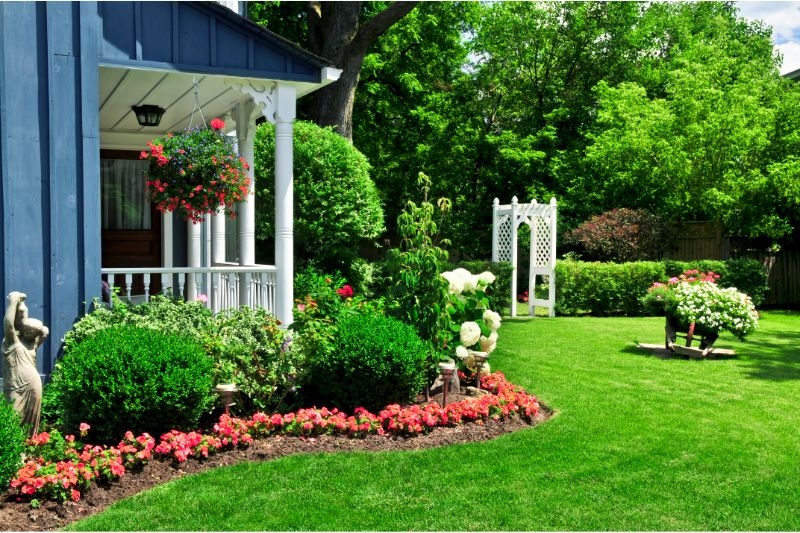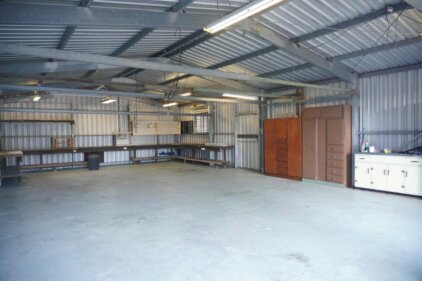Benefits of embracing the indoor-outdoor living trend
- Expanded Living Space: By seamlessly integrating your home and garden, you can effectively expand your living space, allowing you to enjoy the great outdoors while maintaining the comfort and convenience of your indoor environment.
- Improved Mental Well-being: Numerous studies have shown that spending time in nature can have a positive impact on mental health, reducing stress, improving mood, and boosting overall well-being. Incorporating the outdoors into your daily life can help you achieve a more balanced and fulfilling lifestyle.
- Enhanced Entertaining Opportunities: An indoor-outdoor living space provides the perfect backdrop for hosting gatherings, parties, and intimate get-togethers. Your guests will be able to freely move between the indoors and outdoors, creating a more engaging and memorable experience.
- Increased Property Value: Homes that seamlessly integrate indoor and outdoor living spaces are often highly sought after in the real estate market, as they offer a unique and desirable feature that can significantly enhance the value of your property.
Tips for seamlessly integrating your home and garden
- Establish a Clear Transition: Identify strategic points where your indoor and outdoor spaces meet, and create a clear visual and physical connection between them. This could be achieved through the use of large windows, sliding doors, or even a covered patio or veranda.
- Coordinate Design Elements: Ensure that the architectural style, materials, and colour palette of your home are echoed in the design of your outdoor living spaces. This will help to create a cohesive and harmonious aesthetic.
- Utilize Flexible Furnishings: Invest in furniture and decor that can be easily moved between indoor and outdoor areas, such as weather-resistant sofas, chairs, and coffee tables. This will allow you to effortlessly rearrange your living spaces as needed.
- Incorporate Lighting Strategically: Thoughtful lighting design can help to blur the boundaries between your home and garden. Use a combination of overhead lighting, path lighting, and accent lighting to create a seamless and inviting ambience.
- Leverage Indoor-Outdoor Flooring: Consider using the same or complementary flooring materials both indoors and outdoors, such as natural stone, wood, or even high-quality outdoor tiles. This will further enhance the sense of continuity between your living spaces.
Design ideas for creating a cohesive indoor-outdoor living space
- Extend Your Indoor Rooms Outdoors: Designate specific outdoor areas as extensions of your indoor living spaces, such as a covered patio that functions as an outdoor living room or a kitchen garden adjacent to your indoor kitchen.
- Incorporate Biophilic Design Elements: Bring the beauty of nature into your indoor spaces through the use of large windows, skylights, and indoor plants. This will help to create a stronger connection between your home and the surrounding garden.
- Utilize Sliding or Folding Doors: Install large, multi-panel sliding or folding doors that can be easily opened to create a seamless transition between your indoor and outdoor areas.
- Blur the Boundaries with Landscaping: Carefully plan your landscaping to create a natural, flowing transition between your home and garden. Use low-growing plants, permeable paving, and subtle level changes to blur the lines between the two spaces.
- Create Focal Points: Identify key areas where you can establish visual focal points, such as a striking water feature, a sculptural piece of art, or a stunning outdoor fireplace or fire pit. These elements will draw the eye and help to unify your indoor and outdoor living spaces.
Furniture and decor options for indoor-outdoor living
- Weather-Resistant Furnishings: Invest in high-quality outdoor furniture, such as all-weather wicker, powder-coated aluminium, or teak, that can withstand the elements and be used both indoors and outdoors.
- Durable Textiles: Incorporate outdoor-friendly fabrics, such as solution-dyed acrylics or Sunbrella, into your indoor and outdoor furnishings to ensure they can withstand UV exposure, moisture, and frequent use.
- Versatile Lighting: Choose lighting fixtures that can be used both indoors and outdoors, such as pendant lights, sconces, or floor lamps with weather-resistant housings.
- Seamless Accessories: Carry over your indoor decor style into the outdoor spaces by using complementary accessories, such as rugs, throw pillows, and planters.
- Multifunctional Pieces: Look for furniture and decor items that can serve dual purposes, like an outdoor coffee table with built-in storage or a bench that can be used both indoors and outdoors.
Maximizing natural light in your indoor-outdoor space
- Strategically Placed Windows: Ensure that your home’s design incorporates large, floor-to-ceiling windows or sliding glass doors that allow for an abundance of natural light to flood your indoor spaces and create a strong visual connection to the outdoors.
- Skylights and Roof Openings: Consider adding skylights or other roof openings to your indoor spaces, which can help to bring in natural light and create a sense of openness and connection to the sky above.
- Reflective Surfaces: Use light-coloured or mirrored surfaces, such as tiles, countertops, or wall finishes, to help reflect and amplify the natural light within your indoor-outdoor living spaces.
- Sheer Window Treatments: Opt for lightweight, sheer window treatments that can be easily opened to allow natural light to filter in, while still providing privacy and control over the level of illumination.
- Positioning of Outdoor Structures: When planning your outdoor living areas, be mindful of the placement of structures, such as pergolas or shade sails, to ensure they do not cast excessive shadows on your indoor spaces and block natural light.
Creating a functional and stylish outdoor entertaining area
- Designated Seating and Dining Zones: Establish distinct areas for outdoor dining, lounging, and socializing, ensuring that they are well-appointed with comfortable, weather-resistant furniture and ample space for guests to move freely.
- Integrated Cooking and Prep Spaces: Incorporate an outdoor kitchen, grill, or bar area that seamlessly connects to your indoor kitchen, allowing you to easily transition between food preparation and alfresco dining.
- Shade and Weather Protection: Incorporate features like retractable awnings, pergolas, or large patio umbrellas to provide shade and protection from the elements, ensuring your outdoor entertaining area can be used comfortably throughout the year.
- Ambient Lighting: Enhance the ambience of your outdoor entertaining space with strategically placed lighting, such as string lights, lanterns, or in-ground path lighting, to create a warm and inviting atmosphere.
- Multifunctional Furnishings: Look for outdoor furniture and decor that can serve multiple purposes, such as a coffee table with built-in ice buckets or a bench that doubles as extra seating or storage.
Plants and landscaping for a harmonious indoor-outdoor transition
- Layered Planting Schemes: Incorporate a variety of plants, from towering trees to low-growing groundcovers, to create a lush, visually appealing transition between your indoor and outdoor spaces.
- Potted Plants and Planters: Use strategically placed potted plants and planters, both indoors and outdoors, to help blur the boundaries and create a sense of continuity between the two environments.
- Edible Landscaping: Consider incorporating edible plants, such as herbs, vegetables, or even fruit trees, into your outdoor spaces, which can not only contribute to the overall aesthetic but also provide a practical connection to the natural world.
- Permeable Surfaces: Opt for permeable paving materials, such as gravel, pavers, or decomposed granite, to allow for the seamless integration of plantings and to create a more natural, fluid transition between your home and garden.
- Water Features: The addition of a water feature, such as a reflecting pool, fountain, or small stream, can help to create a soothing, natural ambience and further enhance the connection between your indoor and outdoor living spaces.
Maintenance tips for your indoor-outdoor living space
- Regular Cleaning and Upkeep: Establish a routine maintenance schedule to ensure that your indoor-outdoor living spaces remain clean, well-maintained, and free of debris or overgrowth.
- Weatherproofing and Protection: Protect your indoor-outdoor furnishings and decor from the elements by covering or storing them during inclement weather, and regularly applying weatherproofing treatments as needed.
- Integrated Pest Management: Develop a comprehensive pest management plan that addresses any issues in both your indoor and outdoor living areas, using eco-friendly and sustainable methods whenever possible.
- Adaptable Landscaping: Choose plants that are well-suited to the local climate and require minimal maintenance, and be prepared to adjust your landscaping as needed to accommodate changes in weather or growing conditions.
- Seamless Transitions: Regularly inspect the transition points between your indoor and outdoor spaces, ensuring that any thresholds, doors, or other connective elements remain in good working order and continue to provide a smooth, uninterrupted flow between the two environments.
Ready to create your own seamless indoor-outdoor living space? Contact our team of experienced designers and landscapers to get started on your project today. We’ll work with you to develop a customized plan that perfectly integrates your home and garden, ensuring a balanced and harmonious lifestyle.
Conclusion: Embracing the indoor-outdoor living trend for a balanced lifestyle
As we’ve explored, the indoor-outdoor living trend offers a wealth of benefits, from expanded living space and improved mental well-being to enhanced entertaining opportunities and increased property value. By following the tips and design ideas outlined in this article, you can successfully integrate your home and garden, creating a cohesive and functional indoor-outdoor living space that reflects your personal style and enhances your overall quality of life.





